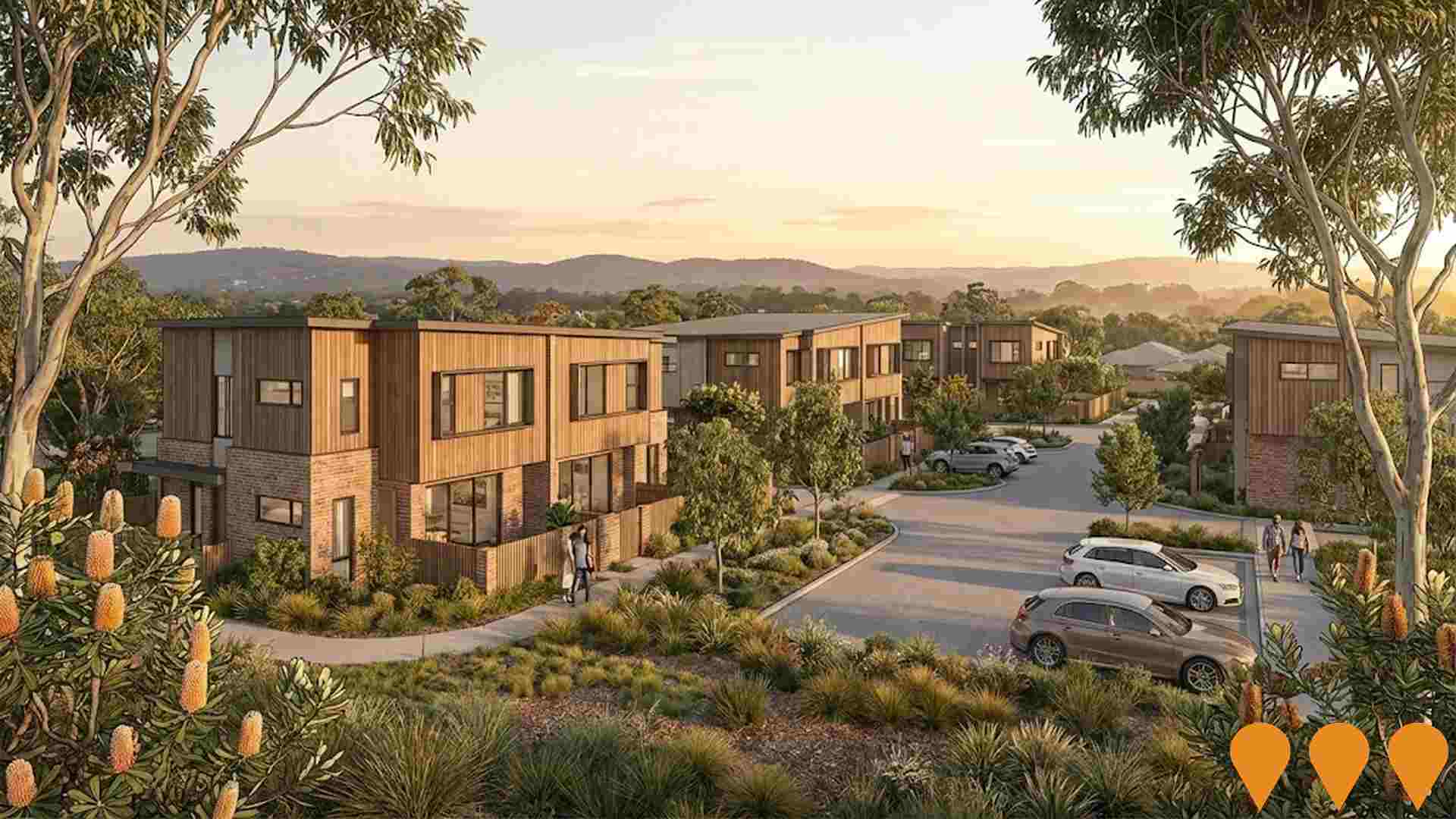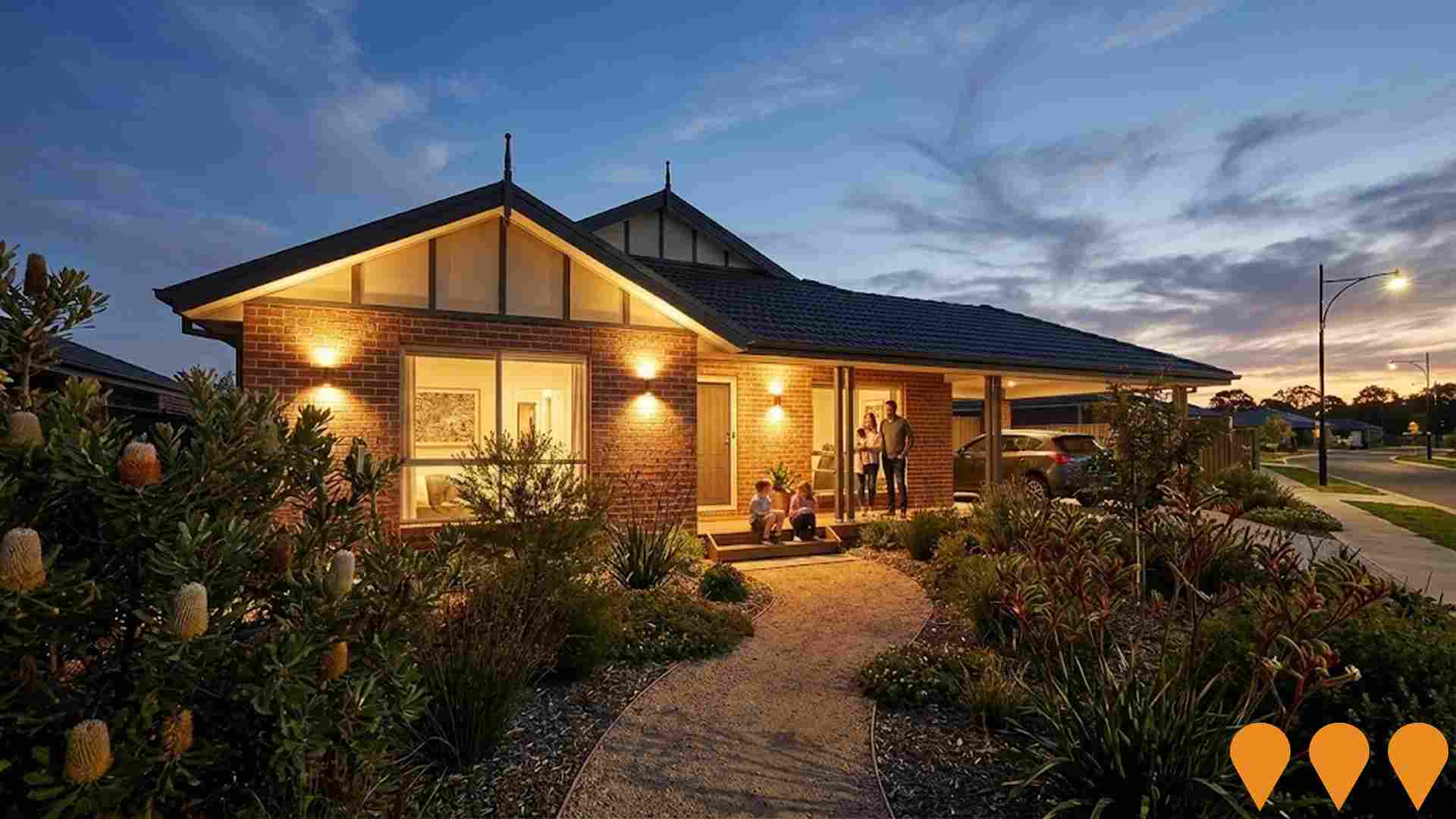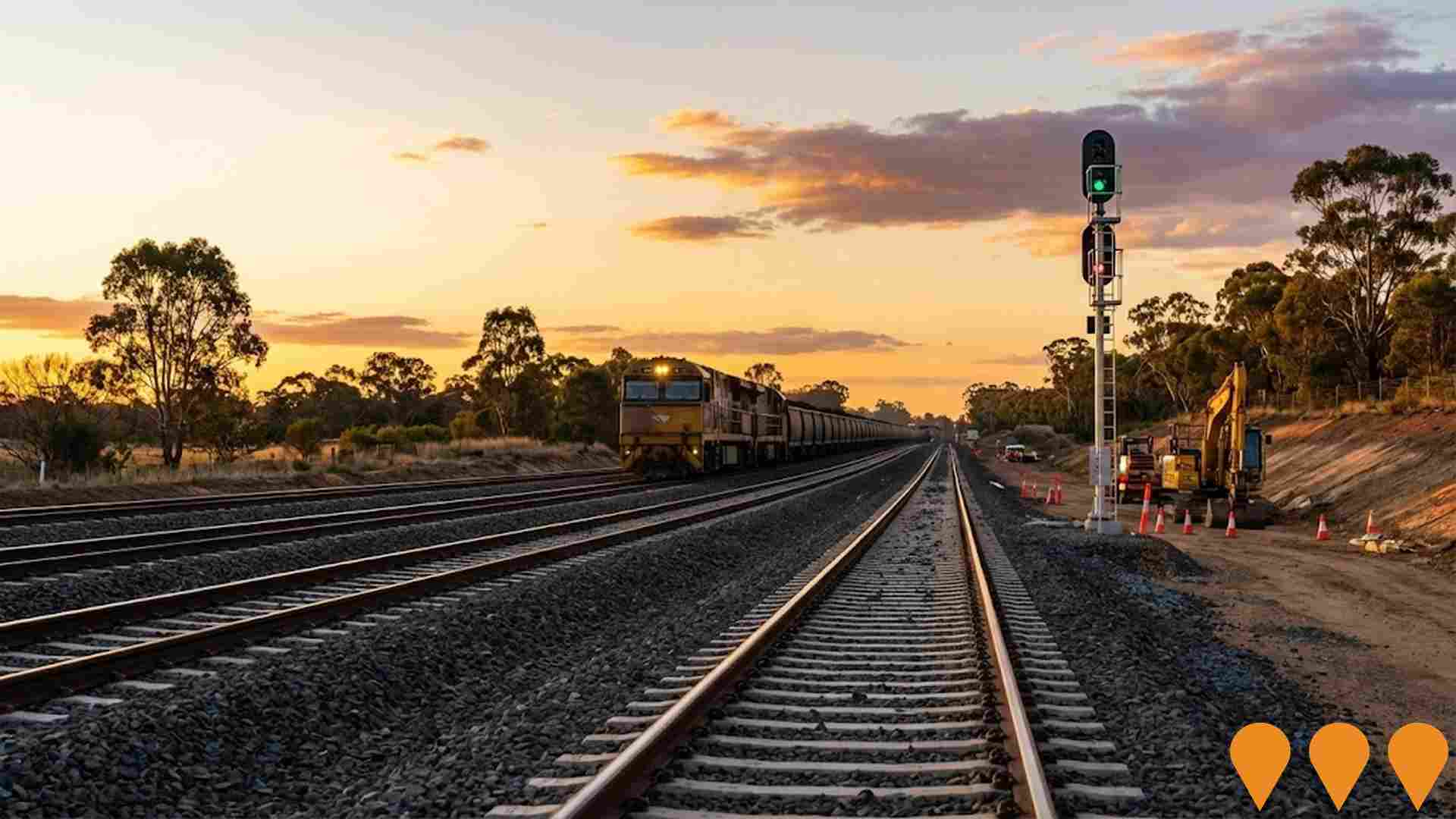Chart Color Schemes
est. as @ -- *
ABS ERP | -- people | --
2021 Census | -- people
Sales Activity
Curious about local property values? Filter the chart to assess the volume and appreciation (including resales) trends and regional comparisons, or scroll to the map below view this information at an individual property level.
Find a Recent Sale
Sales Detail
Population
Beresfield - Hexham is positioned among the lower quartile of areas assessed nationally for population growth based on AreaSearch's assessment of recent, and medium term trends
Beresfield-Hexham's population, as per AreaSearch's analysis, is approximately 8,980 by November 2025. This marks an increase of 419 people, a rise of 4.9% since the 2021 Census which reported a population of 8,561. The change is inferred from ABS' estimated resident population of 8,680 in June 2024 and an additional 150 validated new addresses post-census. This results in a density ratio of 151 persons per square kilometer, indicating significant space per person and potential for further development. Beresfield-Hexham's growth rate since the census, at 4.9%, is close to that of non-metro areas (5.1%), suggesting competitive growth fundamentals. Overseas migration contributed approximately 55.1% of overall population gains in recent periods.
AreaSearch uses ABS/Geoscience Australia projections for each SA2 area, released in 2024 with a base year of 2022. For areas not covered by this data, NSW State Government's SA2 level projections are used, released in 2022 with a base year of 2021. Growth rates by age group from these aggregations are applied to all areas for years 2032 to 2041. Based on projected demographic shifts, lower quartile growth is anticipated for Australia's non-metropolitan areas. Beresfield-Hexham is expected to increase by 270 persons by 2041, recording a decrease of 0.3% in total over the 17 years.
Frequently Asked Questions - Population
Development
AreaSearch assessment of residential development drivers sees a low level of activity in Beresfield - Hexham, placing the area among the bottom 25% of areas assessed nationally
Beresfield - Hexham has averaged approximately 15 new dwelling approvals annually over the past five financial years, totalling 78 homes. As of FY26, 8 approvals have been recorded. On average, 0.5 new residents per year per dwelling constructed were noted between FY21 and FY25. This indicates that new construction is meeting or exceeding demand, providing more options for buyers and enabling population growth.
The average construction value of these properties was $208,000, lower than regional norms, offering affordable housing options. In FY26, $57.1 million in commercial approvals have been registered, reflecting high local commercial activity. However, compared to the Rest of NSW, Beresfield - Hexham has significantly less development activity, 67.0% below the regional average per person. This scarcity typically strengthens demand and prices for existing properties but recent periods show increased development activity. The area's new building activity comprises 75.0% standalone homes and 25.0% attached dwellings, preserving its low density nature and attracting space-seeking buyers. This represents a shift from the area's existing housing composition of 93.0% houses.
The estimated population per dwelling approval is 527 people, reflecting its quiet development environment. Given stable or declining population forecasts, Beresfield - Hexham may experience less housing pressure, creating favourable conditions for buyers.
Frequently Asked Questions - Development
Infrastructure
Beresfield - Hexham has strong levels of nearby infrastructure activity, ranking in the top 40% nationally
Changes to local infrastructure significantly influence an area's performance. AreaSearch identified 18 projects that could impact the area. Notable projects include Beresfield Industrial Park Expansion, Beresfield Residential Precinct, M1 Pacific Motorway Extension to Raymond Terrace (scheduled for completion in late 2023), and Thornton Rail Bridge Duplication (commenced in April 2021). The following list details those most relevant.
Professional plan users can use the search below to filter and access additional projects.
INFRASTRUCTURE SEARCH
 Denotes AI-based impression for illustrative purposes only, not to be taken as definitive under any circumstances. Please follow links and conduct other investigations from the project's source for actual imagery. Developers and project owners wishing us to use original imagery please Contact Us and we will do so.
Denotes AI-based impression for illustrative purposes only, not to be taken as definitive under any circumstances. Please follow links and conduct other investigations from the project's source for actual imagery. Developers and project owners wishing us to use original imagery please Contact Us and we will do so.
Frequently Asked Questions - Infrastructure
Raymond Terrace and Heatherbrae Strategy 2020-2040
A long-term strategic plan to revitalise Raymond Terrace into a strong regional centre. The strategy includes the Raymond Terrace Public Domain Plan, mixed-use precincts, town centre streetscape upgrades, and the delivery of approximately 2,500 new homes by 2041 to support population growth.
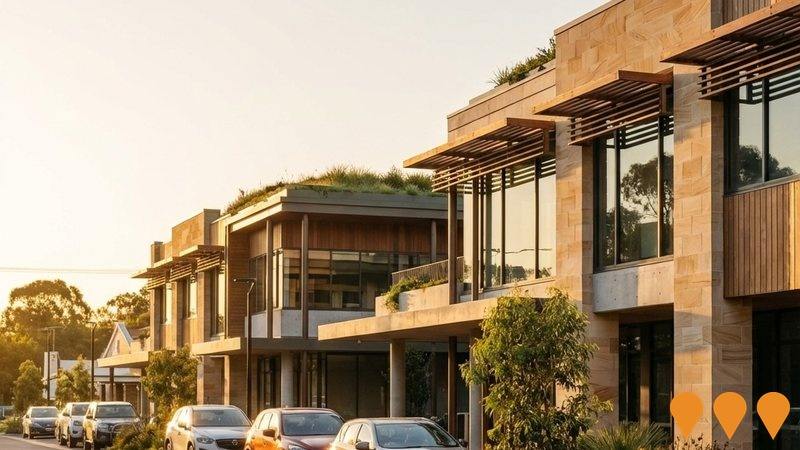
M1 Pacific Motorway Extension to Raymond Terrace
A $2.1 billion, 15-kilometre dual carriageway motorway extension from Black Hill to Raymond Terrace, bypassing Hexham and Heatherbrae. Key features include a 2.6-kilometre viaduct over the Hunter River, Main North Rail Line, New England Highway, and floodplains; new interchanges at Black Hill, Tarro, Tomago, and Raymond Terrace; and widening of Hexham Straight. Construction is progressing steadily across the full 15-kilometre alignment, with key milestones including the completion of piling in the Hunter River, installation of bridge girders and deck pours on the 2.6-kilometre viaduct and various interchanges, and the opening of new sections of road, such as a bridge at Black Hill. The project is jointly funded by the Australian and NSW governments and is expected to open to traffic in mid-2028. It will reduce peak travel time by 7-9 minutes and remove up to 25,000 vehicles per day from key congestion points, supporting approximately 2,700 jobs during construction.
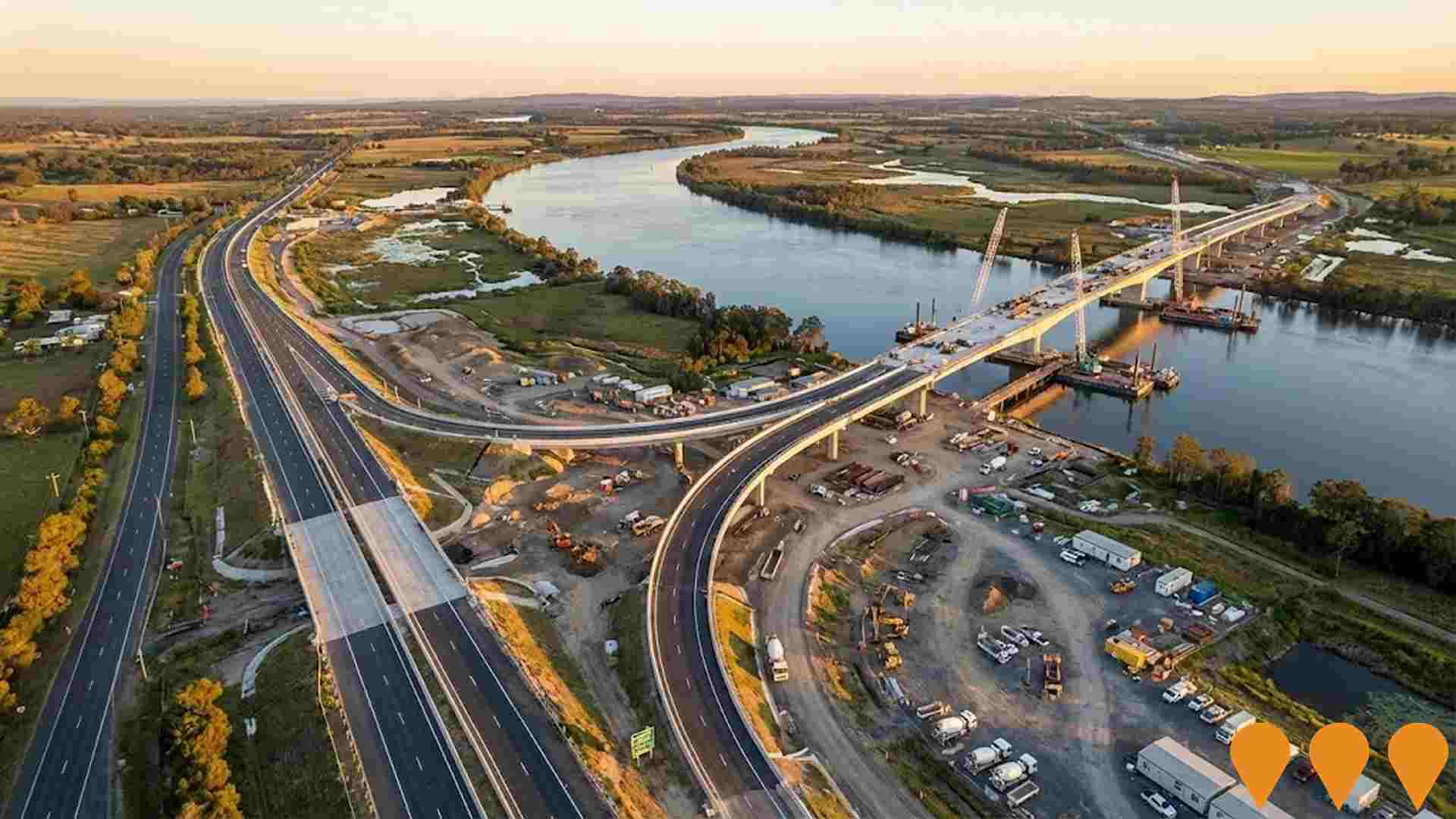
Stony Pinch Urban Development
Long-term conceptual urban development proposal for the post-mining rehabilitation of the Bloomfield Colliery site in Ashtonfield, lower Hunter Valley. The site spans approximately 3,600 hectares and is envisioned to accommodate up to 19,200 dwellings along with employment lands, town centre, recreation facilities and preserved bushland. The Bloomfield Colliery is currently operational with mining approval until 2035. Specific development timelines and details for the urban transformation remain subject to mine rehabilitation completion and future planning approvals under the Stony Pinch consortium and Ashtonfields Agreement.
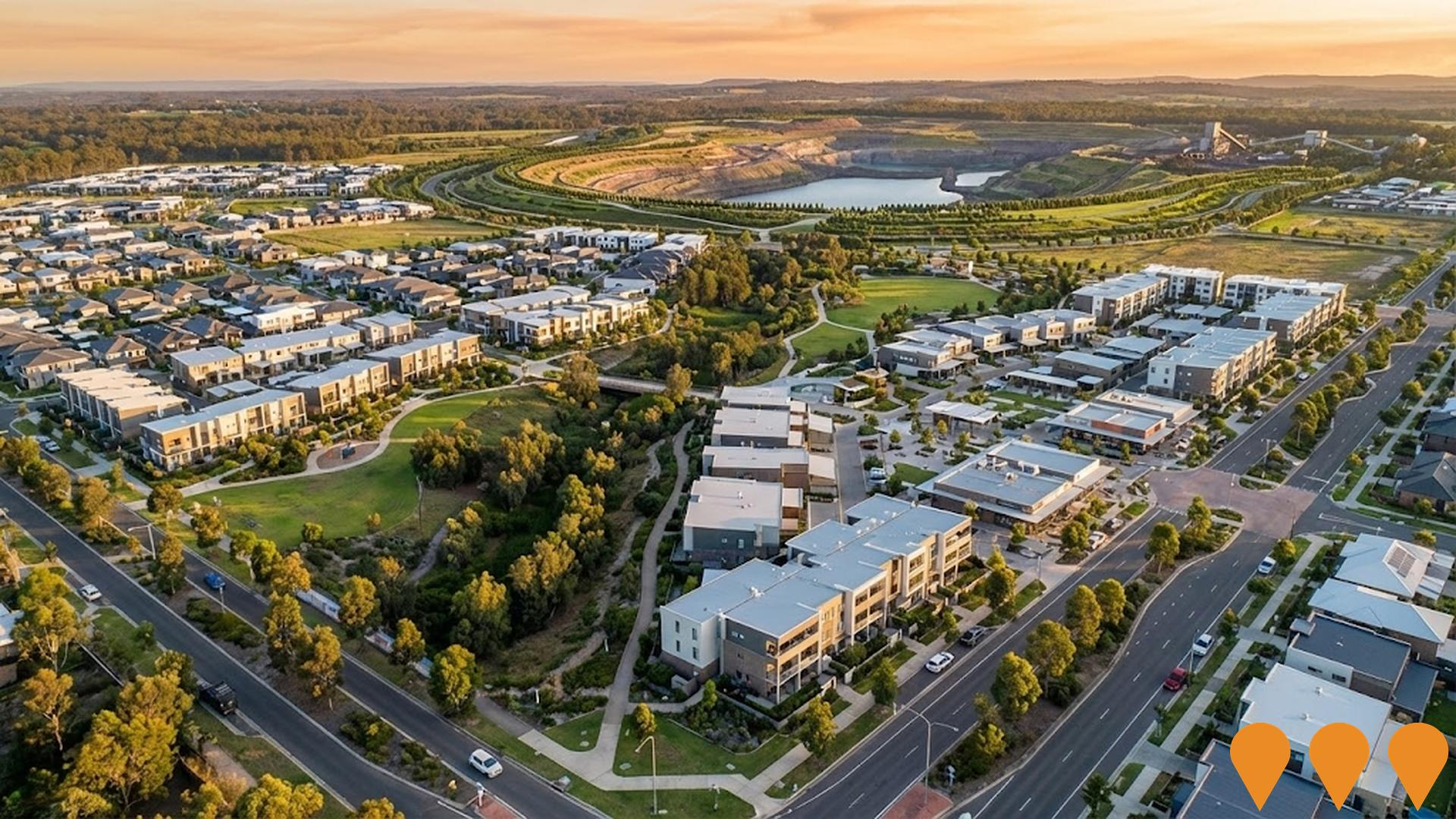
Tomago Battery Energy Storage System (BESS)
A 500 MW / 2,000 MWh grid-scale battery energy storage system (BESS) developed by AGL to improve grid reliability and support the transition to net-zero emissions in the Hunter-Central Coast Renewable Energy Zone. The battery has grid-forming capability and is one of Australia's largest BESS developments. Construction commenced recently following a Final Investment Decision (FID) in July 2025. The total construction cost is estimated to be approximately A$800 million. The project will create around 200 jobs during construction and 6 full-time operational jobs.

Pacific Highway Improvements Hexham
Six-kilometre upgrade of Pacific Highway (Maitland Road) between Newcastle Inner City Bypass and Hexham including new bridges, wider lanes, and flood-resistant infrastructure.

Thornton Rail Bridge Duplication
Duplication of the existing Thornton rail bridge to alleviate peak hour congestion and provide a flood-free route connecting northern Maitland to the M1, Pacific Highway and Hunter Expressway. Transport for NSW is currently undertaking early works including road surface surveys to inform design solutions. The project will ease congestion for the 7000 new residents and 3500 new jobs expected in the region over the next 20 years.
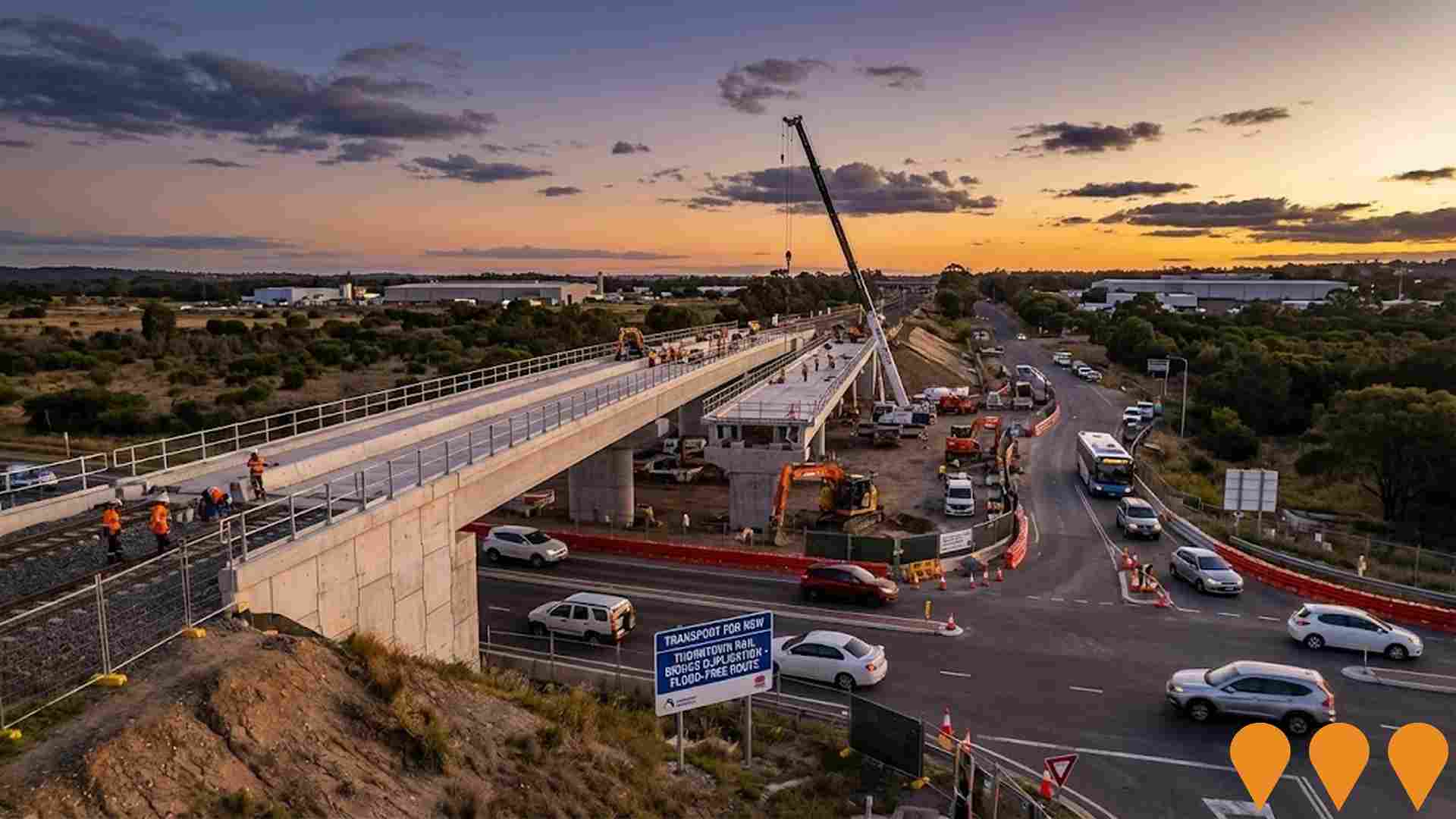
Wirraway Thornton
A completed 511-lot residential development spanning 58 hectares in the lower Hunter Valley, creating a parkland community with quality homes for Defence families and the public. Features 16 hectares of open spaces, cycle tracks, Wirraway Park with aviation-themed playground, half-sized basketball court, fitness station, and community amenities. Now home to over 500 families including 250 Defence families.

Beresfield Industrial Park Expansion
Industrial land subdivision at 40 Weakleys Drive to expand supply of serviced industrial lots within the Beresfield/Weakleys Drive precinct. Recent records show DA2023/00186 (two into nine lot subdivision including road) with a 2025 Section 4.55(1A) modification application (MA2025/00326) under the City of Newcastle, indicating the project is progressing with post-consent changes.
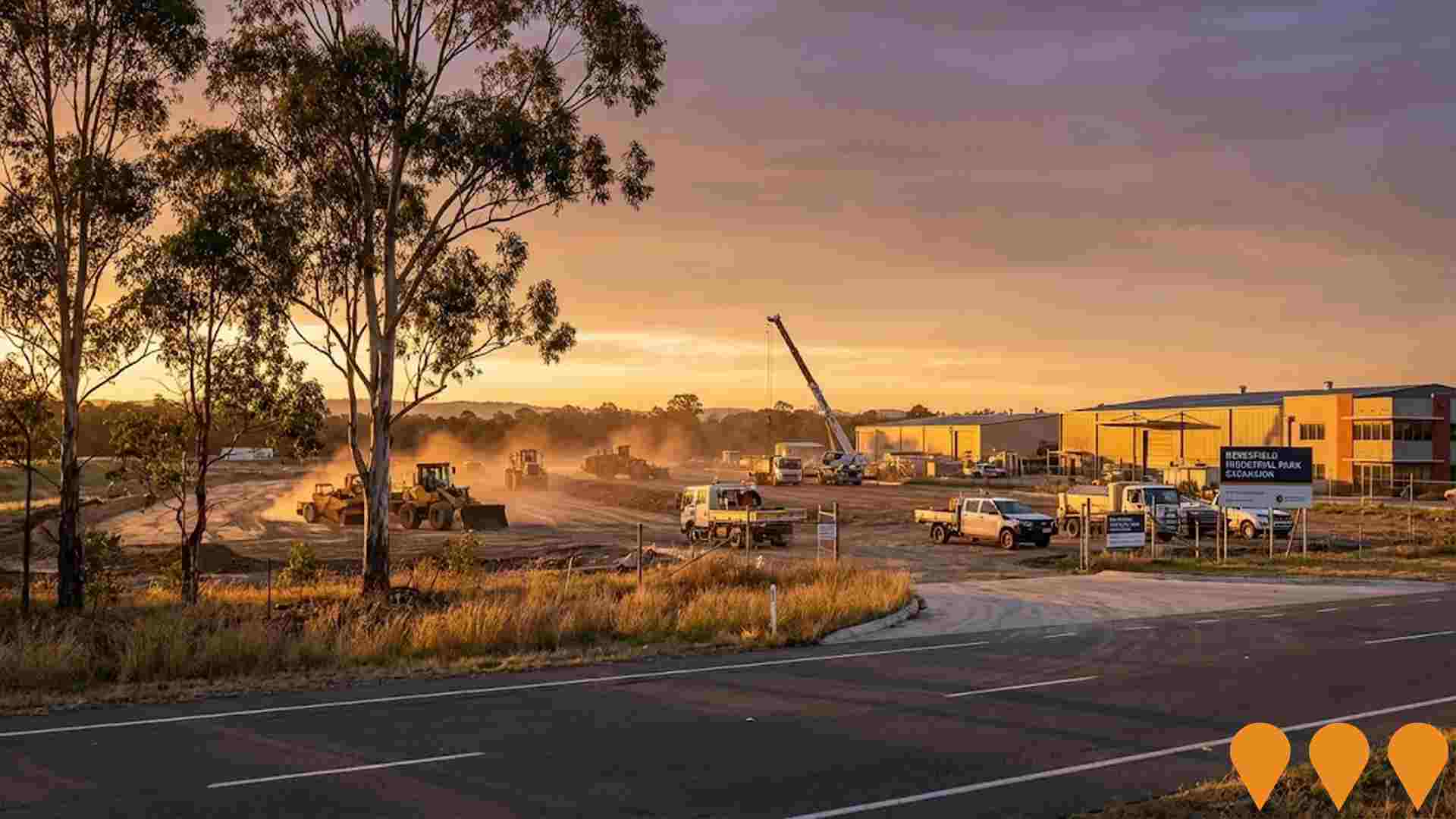
Employment
AreaSearch assessment indicates Beresfield - Hexham faces employment challenges relative to the majority of Australian markets
Beresfield-Hexham has a diverse workforce with both white and blue collar jobs, notably in manufacturing and industrial sectors. The unemployment rate was 7.9% as of June 2025, with an estimated employment growth of 0.7% over the past year.
There were 3,941 residents employed while the unemployment rate was 4.3%, higher than Rest of NSW's rate of 3.7%. Employment is concentrated in health care & social assistance, manufacturing, and construction, with manufacturing at 2.0 times the regional average. However, education & training has lower representation at 5.7% compared to the regional average of 9.6%. There is one worker for every resident, indicating it functions as an employment hub attracting workers from surrounding areas.
Over a 12-month period ending June 2025, employment increased by 0.7% while labour force rose by 2.4%, causing unemployment to rise by 1.6 percentage points. National employment forecasts from Jobs and Skills Australia, released in May 2025, project national employment growth of 6.6% over five years and 13.7% over ten years. Applying these projections to Beresfield-Hexham's employment mix suggests local growth of approximately 5.9% over five years and 12.8% over ten years.
Frequently Asked Questions - Employment
Income
Income levels sit below national averages according to AreaSearch assessment
According to AreaSearch's aggregation of the latest postcode level ATO data released for financial year ended June 2022, Beresfield - Hexham had a median income among taxpayers of $55,616 and an average income of $64,656. Nationally, the median income was $57,079 and the average was $68,327 in the same period. In Rest of NSW, these figures were $49,459 and $62,998 respectively. Based on Wage Price Index growth of 12.61% since financial year ended June 2022, current estimates for Beresfield - Hexham would be approximately $62,629 (median) and $72,809 (average) as of September 2025. From the Census conducted in August 2021, household incomes in Beresfield - Hexham fell between the 16th and 16th percentiles nationally. Income analysis reveals that 30.3% of individuals (2,720 people) had an income range of $1,500 to $2,999, similar to the regional figure of 29.9%. Housing affordability pressures are severe, with only 82.5% of income remaining after housing costs, ranking at the 15th percentile nationally.
Frequently Asked Questions - Income
Housing
Beresfield - Hexham is characterized by a predominantly suburban housing profile, with above-average rates of outright home ownership
Beresfield-Hexham's dwelling structure, as per the latest Census, comprised 93.1% houses and 6.9% other dwellings. This compares to Non-Metro NSW's 70.5% houses and 29.5% other dwellings. Home ownership in Beresfield-Hexham was 35.8%, with mortgaged dwellings at 34.2% and rented ones at 29.9%. The median monthly mortgage repayment was $1,450, below Non-Metro NSW's average of $1,962. Median weekly rent in Beresfield-Hexham was $340, compared to Non-Metro NSW's $400. Nationally, mortgage repayments were significantly lower than the Australian average of $1,863, and rents were less than the national figure of $375.
Frequently Asked Questions - Housing
Household Composition
Beresfield - Hexham has a typical household mix, with a fairly typical median household size
Family households account for 68.4% of all households, including 23.9% couples with children, 25.3% couples without children, and 17.3% single parent families. Non-family households comprise the remaining 31.6%, with lone person households at 28.3% and group households making up 3.5% of the total. The median household size is 2.4 people, which matches the average for the Rest of NSW.
Frequently Asked Questions - Households
Local Schools & Education
Beresfield - Hexham faces educational challenges, with performance metrics placing it in the bottom quartile of areas assessed nationally
The area faces educational challenges, with university qualification rates of 9.6% substantially below the NSW average of 32.2%. This represents both a challenge and an opportunity for targeted educational initiatives. Bachelor degrees lead at 7.6%, followed by postgraduate qualifications (1.2%) and graduate diplomas (0.8%). Trade and technical skills feature prominently, with 39.1% of residents aged 15+ holding vocational credentials – advanced diplomas (7.5%) and certificates (31.6%).
Educational participation is notably high, with 26.5% of residents currently enrolled in formal education. This includes 10.0% in primary education, 6.9% in secondary education, and 3.2% pursuing tertiary education. A robust network of 8 schools operates within Beresfield - Hexham, educating approximately 1,590 students. The area demonstrates varied educational conditions across Beresfield - Hexham, with the educational mix including 5 primary, 1 secondary, 1 K-12 school, and a specialist school addressing specific learning needs. Note: where schools show 'n/a' for enrolments please refer to parent campus.
Frequently Asked Questions - Education
Schools Detail
Nearby Services & Amenities
Transport
Transport servicing is high compared to other areas nationally based on assessment of service frequency, route connectivity and accessibility
Beresfield-Hexham has 100 active transport stops offering a mix of train and bus services. These stops are served by 81 individual routes, facilitating 4,994 weekly passenger trips in total. Residents enjoy excellent transport accessibility, with an average distance of 158 meters to the nearest stop.
Service frequency across all routes averages 713 trips per day, equating to about 49 weekly trips per individual stop.
Frequently Asked Questions - Transport
Transport Stops Detail
Health
Health performance in Beresfield - Hexham is a key challenge with a range of health conditions having marked impacts on both younger and older age cohorts
Beresfield-Hexham faces significant health challenges, with various conditions affecting both younger and older residents. Private health cover stands at approximately 52%, compared to the average SA2 area's 55.6%.
The most prevalent medical conditions are arthritis (11.5%) and mental health issues (10.9%), while 57.6% report no medical ailments. The area has a higher proportion of seniors, at 20.4%, compared to Rest of NSW's 16.7%. Health outcomes among seniors largely align with the general population's profile.
Frequently Asked Questions - Health
Cultural Diversity
Beresfield - Hexham is considerably less culturally diverse than average when assessed alongside AreaSearch's national rankings for language and cultural background related metrics
Beresfield-Hexham, as per the 2016 Census, had a cultural diversity below average with 91.2% of its population born in Australia, 92.2% being Australian citizens, and 94.9% speaking English only at home. Christianity was the main religion, comprising 54.6%, compared to 47.7% across Rest of NSW. The top three ancestry groups were Australian (33.4%), English (31.5%), and Australian Aboriginal (7.5%).
Notably, Maori (0.7%) and Samoan (0.2%) were overrepresented compared to regional averages of 0.3% and 0.1%, respectively. Macedonian was underrepresented at 0.2%.
Frequently Asked Questions - Diversity
Age
Beresfield - Hexham's population is slightly older than the national pattern
The median age of Beresfield-Hexham is 38, which is lower than the Rest of NSW figure at 43 but equivalent to the national norm also at 38. The 25-34 age group makes up 16.2% of the population in Beresfield-Hexham, higher than the Rest of NSW percentage. Conversely, the 65-74 cohort is less prevalent at 10.5%. Post the 2021 Census, the 25 to 34 age group has increased from 14.5% to 16.2%, while the 35 to 44 cohort has risen from 10.8% to 12.4%. However, the 45 to 54 cohort has decreased from 11.8% to 10.4%, and the 55 to 64 group has dropped from 12.4% to 11.3%. By 2041, demographic modeling projects significant shifts in Beresfield-Hexham's age profile. The 25-34 group is expected to grow by 15%, reaching 1,669 people from the current 1,451. Meanwhile, population declines are forecast for the 65-74 and 5-14 cohorts.
